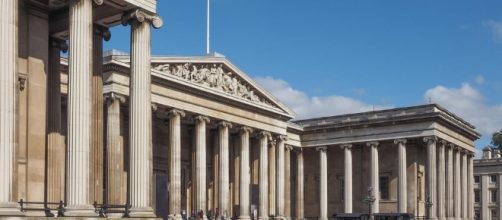Two fishermen turned amateur treasure hunters, Mark Hambleton and Joe Kania, have discovered four Gold torcs, likely worth over £100,000. In December 2016, the men found three necklaces and one bracelet, which experts say are around 2,500 years old, in a Staffordshire field.
The jewellery is believed to be from the period of 400-250 BC, explained Dr Julia Farley, curator of British & European Iron Age Collections for the British Museum. The find ‘is probably the earliest iron age gold work ever discovered in Britain’, Farley said. The torcs have been officially confirmed as treasure at an inquest led by coroner Ian Smith.
Smith joked that the torcs might be worth “a few bob or two”. The jewels are at least 80% gold, the inquest heard.
Gold jewellery ‘probably worn by wealthy and powerful women’
Experts believe that the new treasures could change our understanding of Iron Age Britain. Where the torcs came from, who owned them, and why they were buried, are some of the key questions that researchers will now attempt to answer.
BBC News: 'Oldest' Iron Age gold work in Britain found in Staffordshire, a 'unique find of international importance' https://t.co/3R7kigyPK5
— British Museum (@britishmuseum) February 28, 2017
It is speculated that overseas visitors from countries in neighbouring Europe, likely Germany and France, might have brought the torcs with them.
Farley said the ancient jewellery was ‘probably worn by wealthy and powerful women’. These women, arriving in Britain before the Roman invasion, could have married British men and settled here.
There is no definite answer as to why the treasures were buried in a field. Originally all four pieces were carefully hidden together, but were later hit by a plough and scattered metres apart where Hambleton and Kania found them. The torcs might have been stored underground for safekeeping, though why they were never dug up by their owners is a mystery. Another explanation is that they were ritually buried as an offering to the gods.
Treasure Hunter’s father told him not to give up
The treasures were found on farmland, in Leekfrith parish on the Staffordshire moors.
Amateur treasure hunter Mark Hambleton had previously searched the same muddy fields with his father, more than 20 years before, and found nothing. Hambleton was discouraged and started fishing as a hobby instead.
Recently Hambleton’s father encouraged him to take up his metal detector once more, leading to the discovery of a lifetime. ‘I am so glad that we took his advice’ said Hambleton, who unearthed the iron age jewellery with his friend Joe Kania. Hambleton’s father died recently, but not before he saw what his son had discovered during the Christmas period
Oldest #IronAge gold #jewellery ever discovered in Britain found in #Staffordshire See Wed Express & Star for full details. #hoard #gold pic.twitter.com/aVvsSTXTQ5
— Steve Derry (@SteveDerry_Star) February 28, 2017
Kania found the first torc on a hilltop.
‘I knew what it was straight away’, explained Hambleton, ‘because I’d seen pictures in books and magazines’. After more sweeps of the area, the pair found the other three pieces separately, about one metre apart.
Gold confirmed as treasure, likely worth more than £100,000
Independent antiquities experts, appointed by the Secretary of State for Culture, Media, and Sport, The Rt Hon Karen Bradley MP, will now advise on what the torcs are worth. These experts, the Treasure Valuation Committee (TVC), will then make an offer to Hambleton and Kania for their find. The pair of amateur treasure hunters have said they will split the proceeds with Stuart Heath, the owner of the 640-acre farmland on which the treasure was found.
Since being confirmed as treasures, the torcs are now property of the crown. Any museum wishing to acquire the artifacts will be offered a price by the TVC, which will then be submitted to the Secretary of State for formal approval. Once the price is approved, museums hoping to acquire the treasures will begin fundraising.
In 2009 the TVC valued the Staffordshire Anglo-Saxon Hoard, gold pieces found 50 miles away from Heath’s field, at £3.285 million. The hoard was discovered by metal detecting enthusiast Terry Herbert in 2009.
Staffordshire County Council leader, Phillip Atkins, said that Staffordshire was ‘unbelievably lucky’ to have been home to such important discoveries.

